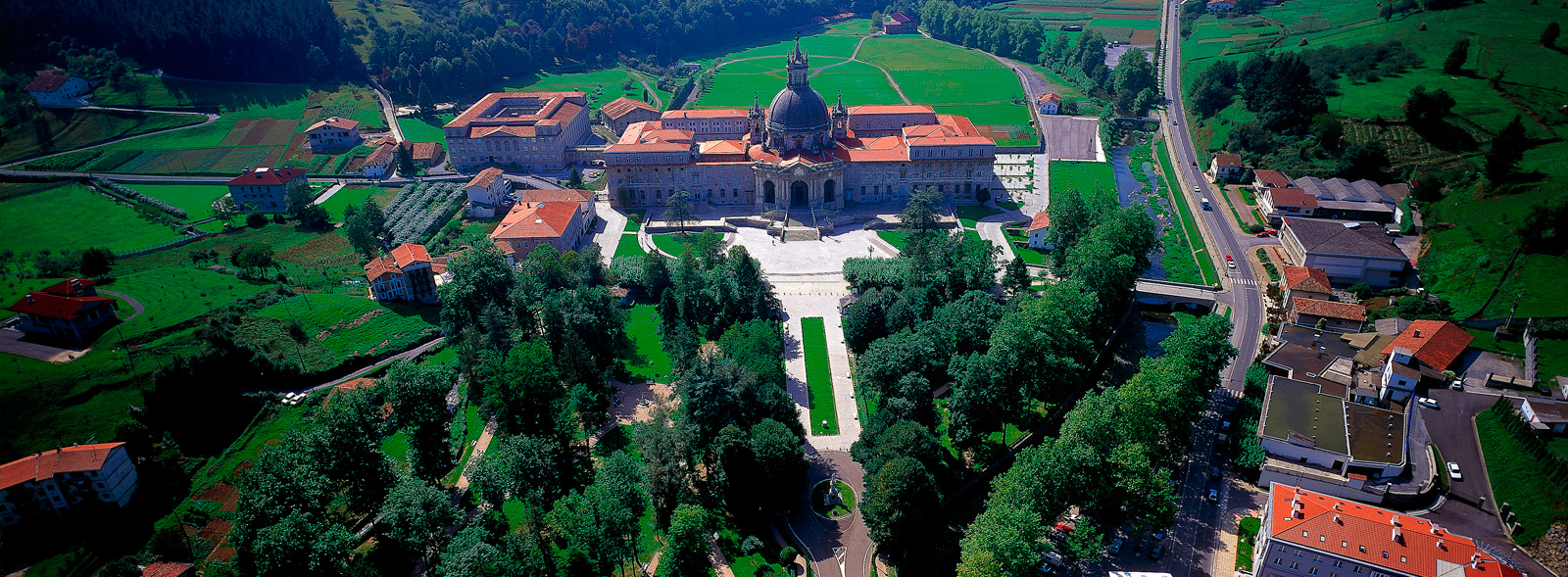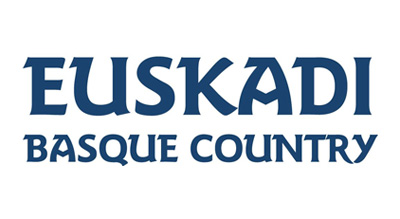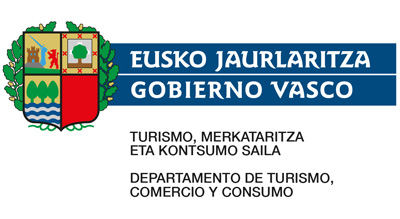Urola Greenway
Route Description
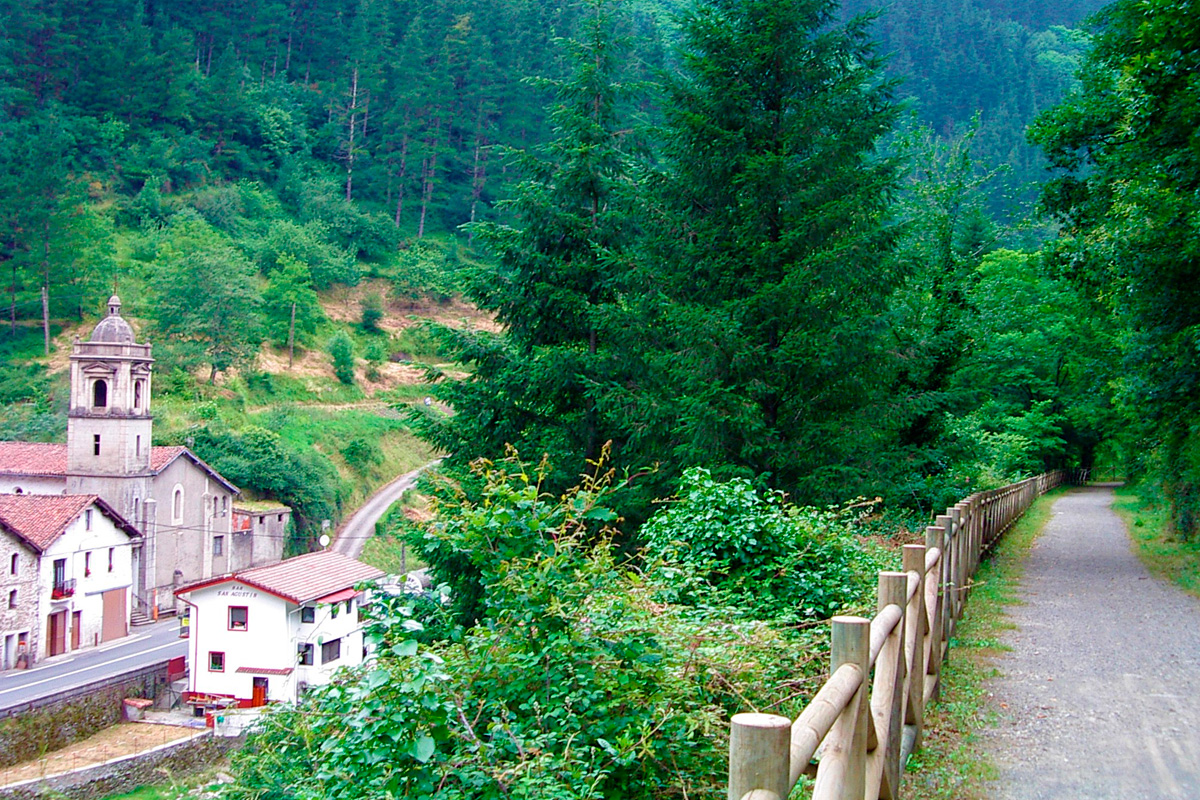 Before beginning our adventure along the Urola Valley, it is important to know that, although the suggested route begins in the locality of Iraeta, the itinerary has been extended for some kilometres towards the coast.
Before beginning our adventure along the Urola Valley, it is important to know that, although the suggested route begins in the locality of Iraeta, the itinerary has been extended for some kilometres towards the coast.
If you wish, you can start the greenway right on the beach in Zumaia (km 0), which forms part of the Basque Coast Geopark. From this coastal locality, with the reference point being the old Urola railway station, to Narrondo, the route features the characteristics of a 2.9-km-long bidegorri or cycle lane. However, from here as far as Iraeta (km 6.8), cyclists and trekkers have to continue their journey along the busy GI-631 road for 3.9 km, so be careful!
To the Basque Railway Museum
Having said that, we suggest following the itinerary uphill from Iraeta (km 6.8) to Mirandaola (km 44.3), travelling safely and comfortably from a landscape near the coast up into the mountains, in parallel to the Urola River.
Before leaving Iraeta, it is worth taking a ride on the Iraeta train, the Basque Country's first miniature train circuit, located in a railway park built beside the Zestoa football field. Its location at the beginning of the Urola Greenway makes it easily accessible for families, and a fun addition to this railway adventure.
After a straight stretch, we come to Zestoa (km 8.3). Here, it is worth visiting the Ekain Cave Museum, which houses a replica of the rock paintings in the cave of the same name, declared World Heritage by UNESCO. Another curiosity in Zestoa is to be found in Lili Palace, where, by means of the play El honor de Lili, we can discover what Gipuzkoa was like four centuries algo. The medieval palace is the setting of this theatrical experience in which history comes to life, placing us in the very spot where the events took place.
The greenway passes right next to these two interesting sites and, for the first time crosses, the Urola River by 2 bridges, the first of many that we will find on the route.
Continuing our trip, we visit the famous Zestoa spa and Lasao (km 12.3) along a winding stretch of the greenway as far as Azpeitia, passing through beautiful mountain scenery accompanied by the Urola River. In this section, where steam trains that depart from the Basque Railway Museum still pass along the tracks, we can be lucky enough to travel next to the train if we coincide with the "Aurrerá" and its cars loaded with visitors, recalling those journeys on the old trains.
Straddling both sides of the river, the Gipuzkoa locality of Azpeitia (km 18.3) is located at the foot of the Izarraitz Nature Reserve, limestone peaks featuring intricate relief, karst formations, and beech and oak groves. Like other localities in the Urola Valley, Azpeitia is an industrial, rural, and monumental cocktail made up of industrial estates (the source of its present-day economy), hamlets scattered among the high mountains, and an old town worth visiting.
We cannot leave Azpeitia without visiting the Basque Railway Museum housed in the former Azpeitia Station, the heart of the old Urola Railway.
On our way to the Sanctuary of Loyola and Azkoitia
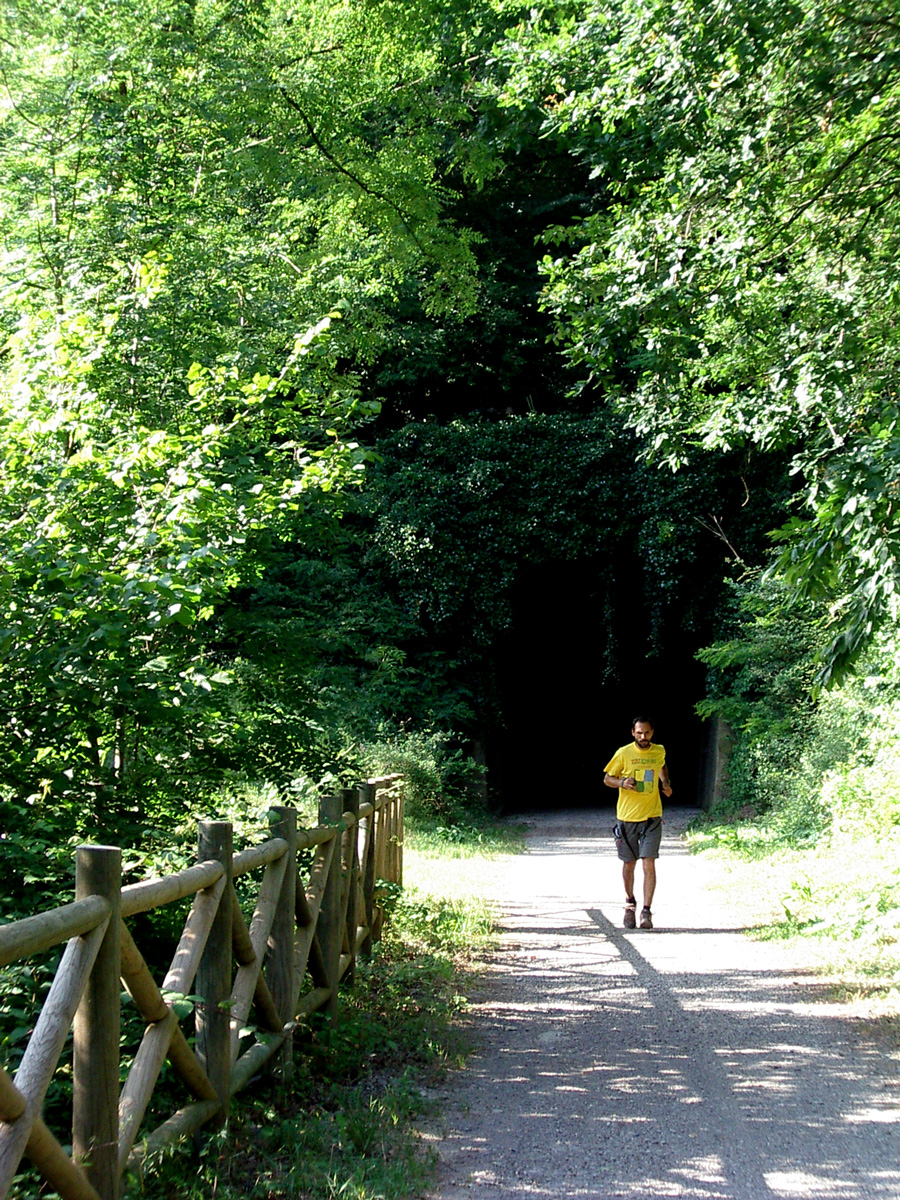
The Urola Greenway continues through the townscape of Azpeitia, and green hillsides dotted with hamlets. At this point, the itinerary meets up with the Urola River, the landscape's main feature and our inseparable travelling companion until the end of this route. Having come together, the greenway and river pass by the Egibar hamlet and the educational Ekoetxea Azpeitia Museum, continuing as far as the old railway station and gardens preceding the Sanctuary of Loyola (km 20.3). This asphalted section is very comfortable and a place where there is never a lack of people on foot, by bike and on skates.
At Loyola Station, the asphalt lane is interrupted by an unpassable railway tunnel that prevents us from following the original railway line. This interruption is merely an invitation to go through the shaded gardens and stop in front of the Sanctuary of Loyola, a masterpiece of Basque religious art. Under the aura of St. Ignatius, founder of the Company of Jesus, the sanctuary is a complex made up of a baroque basilica featuring a masterly dome and Churrigueresque façade, the Loyola family's old tower house, where St. Ignatius was born in 1491, the Residence (1713), the former convent and other buildings of interest. This is the start point of the Ignatian Way, whose first section, as far as the locality of Zumarraga, coincides with the greenway's route.
Towards Azkoitia
After passing the sanctuary, the greenway leaves behind the hustle and bustle of buses filled with tourists. Once again converted into a flat, lively walk, we enjoy a delightful section as the greenway passes through the wide, green Urola Valley: firstly, alongside the river, shaded by plane, ash, and alder trees; then, surrounded by green meadows and picturesque hamlets; and finally, terraced once again above the river.
Arriving in Azkoitia (km 23.8), the first half of the route through its urban centre is along the bidegorri or bike lane that faithfully follows the old railway line passing by the former Azkoitia Station, which has been restored as a library. In this locality, Oteiza's adopted town, we can see the series of six pediments that symbolise the seven Historical Territories of the Basque Country.
On leaving Azkoitia, since the old railway route has not yet been upgraded, we have to walk through a historic centre declared that has been a monumental site. From Azkoitia Station, Xabier Munibe Street leads to the channelled Urola River and Desusen Biohotz Agurgarria Square, a social epicentre presided over by the parish church of Santa María la Real and the blackened Idiakez Palace. As the home of many legendary pelota players, Azkoitia also follows the common pattern in the Urola Valley: industries, farmhouses and history. Also noteworthy are the Tower-House of Balda, Floreaga Zar Palace and Intsausti Palace.
Without leaving the right bank, we will continue to follow the Urola River upstream to a wide esplanade from which the railway route has been upgraded once again. The greenway borders the Jausoro neighbourhood and leads to the Umansoro Diego Aita Industrial Estate. There, the left street leads to the car park at the back of the industrial estate and the continuation of the greenway.
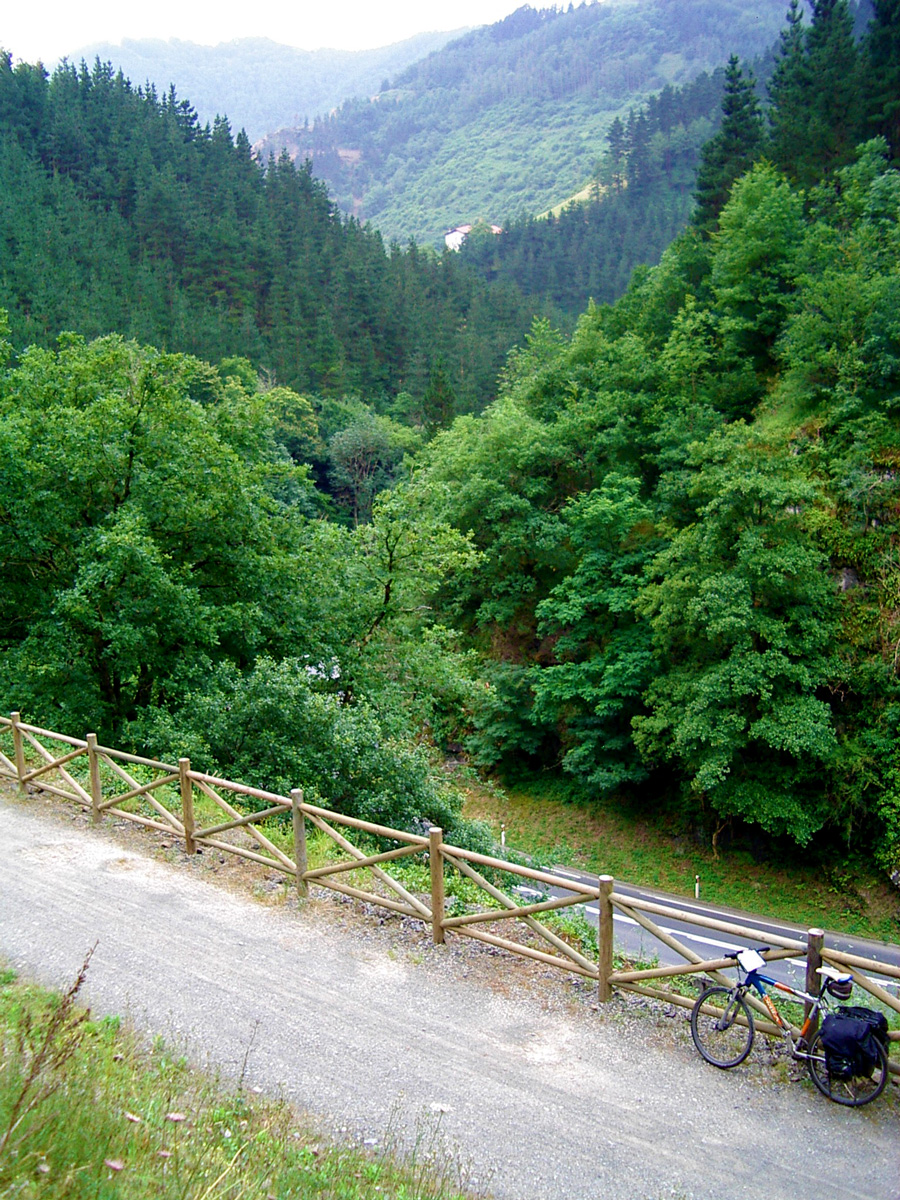 The greenway advances with personality between rows of young trees, going around the industrial estate’s large buildings on one side, while high mountains featuring pine and leafy trees rise up on the other. After passing by the industrial estate, the asphalt turns into compacted gravel and the greenway continues straight ahead, passing by fruit trees, vegetable gardens, and scattered farmhouses and huts. This intermediate section between urban life and nature this will be a peaceful stretch where we will see the odd person doing farmwork. Here we will also have the opportunity to go through the only underpass of the entire route, a railway element that is a silent witness to the passage of so many trains.
The greenway advances with personality between rows of young trees, going around the industrial estate’s large buildings on one side, while high mountains featuring pine and leafy trees rise up on the other. After passing by the industrial estate, the asphalt turns into compacted gravel and the greenway continues straight ahead, passing by fruit trees, vegetable gardens, and scattered farmhouses and huts. This intermediate section between urban life and nature this will be a peaceful stretch where we will see the odd person doing farmwork. Here we will also have the opportunity to go through the only underpass of the entire route, a railway element that is a silent witness to the passage of so many trains.
Along the Urola Valley featuring aesthetic bridges and tunnels
Everything changes when we cross the Urola River and the GI-631 road for the first time, over the same bridge. The greenway enters a narrow valley, which could be described as a gorge, which the road and the river go through in parallel. Passing over that bridge means entering a wild world, where railway engineers had to work hard to make a strip of complicated slopes passable.
And so, we move forward: trapped between narrow, steep slopes covered entirely with ash, oak, alder, chestnut, maple, hazelnut, acacia, plane trees and a perennial pine forest that stretches towards the high peaks. Starting from the aesthetic viaduct supported by four arches, the winding river and valley becomes very twisted. For this reason, the greenway dispenses with the river and its basin as a natural route and, unlike the road, runs straight ahead, drilling into rock to form tunnels and building bridges over the river. The greenway thereby becomes a continuous succession of aerial and underground walks. "Aerial" because of the colourful viaducts and numerous bridges that cross the road and river, of which we only see their simple railings and aesthetic curved parapets of rotund beams intertwined in the purest railway style... and highlighting the importance of iron for this entire area.
And "underground" walks through the numerous tunnels of all kinds: short, medium and long, curved or straight, dark or visible, lined with living rock or something of both, dry or wet, but always cool, featuring concrete surfaces and lighting, with lush vegetation hanging down at their entrances or mouths. A section that stays in your mind’s eye and leaves you with the feeling that the railway has managed to overcome the rugged terrain here. Perhaps the most spectacular section of the route, and certainly the most "naturalized."
The oasis of Aizpurutxo
We will cross up to 9 bridges and 9 tunnels to reach the old station of Aizpurutxo, a ghostly apparition among so much greenery. Immediately afterwards the track crosses another bridge, enters tunnel 10 and then runs along a terrace on the hillside, at a considerable height, overlooking the image of Aizpurutxo (km 30.8). This small urban centre at a lower level than the greenway road has several bars that are very popular with travellers. There is a path that goes down from the greenway. However, there is also a fountain on the side of the greenway if all we need is water. And down in the river, if we look closely, we can easily see the crabs that inhabit these waters.
From Aizpurutxo we continue through the Urola Gorge, although now the leafy trees are limited to those alongside the river, giving free rein to a pine forest that covers everything copiously. Likewise, the constant going from one bank to the other is a thing of the past. From now on, the slope on the left will be our host; and the tunnels, previously almost consecutive, will be spaced out as their length, curvature and darkness increase. Thus, the route loses the straightness it displayed when entering the Urola Valley, to adjust to the winding slopes that climb towards the Irino and Zamiño mountains.
Towards urban life
The road crosses the long tunnel 19, the last of the route, and reaches the rest area in the place called Mesa de Aginaga, on the side of the road that goes up to the homonymous hamlet. The greenway leaves behind the narrow mountains, tunnels and bridges, to enter a valley where the mountains are not so rugged, providing ample space to compose an idyllic image of meadows and farmhouses.
The Urola Greenway crosses the river and enters right into Urretxu and Zumárraga (km 32.8). Between buildings, the asphalted lane reaches the old station of Villareal in Urretxu, which has been converted into a bar, and the urban centre where we can see its museum of minerals and fossils. After rubbing shoulders with terraces and gardens, the greenway continues on as a pleasant riverside route that ends in front of the old station of Zumarraga, a beautiful example of traditional architecture that imitates the shapes of the Basque farmhouse.
In Zumárraga it is worth going off the beaten path to visit the Chapel of La Antigua, a national historic and artistic site featuring a unique roof and truss made entirely of oak wood. It should be noted that it is fair distance away and located on a hill.
Towards Mirandaola
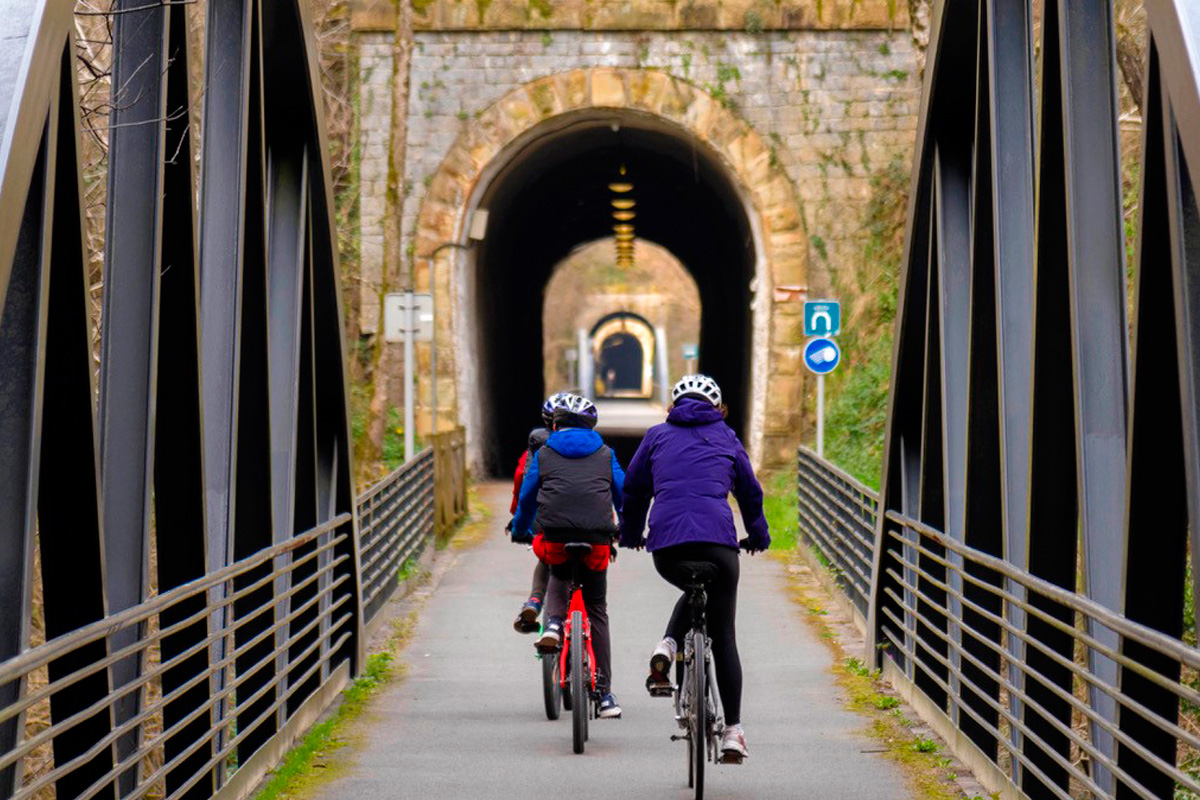
The old Urola railway ended in Zumárraga. However, the Urola Greenway continues on, running parallel to the active railway line, on the route used by the Patricio Echevarría freight train, called after a key figure in the Gipuzkoan iron and steel industry.
On the left hand we go around the old station and Ertzaintza (Basque police) post, to take the red bidegorri (bike line), leaving on the left the station (of the active line) of Zumárraga along which commuter trains and other trains rune. Here (or in Brinkola), we can take the train and return to Donostia/San Sebastián or continue on this bike lane that goes along the central reservation until we reach a roundabout. Faced with the latter, the asphalt lane crosses the street on the left and embarks on a new route.
The greenway is now surrounded on both sides by long metallurgical buildings, smoking giants and the smell of iron. Since we are passing through an industrial area, we will have to be careful with any trucks passing by. However, when crossing the Urola River, there is an open space where we can take in fresh air again before we surround ourselves again with industrial buildings and the embankment that supports the passage of trains.
We enter Legazpi (km 42.3), the penultimate point of our route, in an industrial landscape that has its roots in those wind forges that, around the 13th century, began to make use of the fast-flowing waters running down from the mountains to the banks of the Legazpi River, known since then as Urola, which means "water of the forges" in the Basque language.
In Legazpi it is a must to visit the Chillida museum-factory. On the lower floor is the artist's workshop, as well as the forging machines with which he made many of his great sculptures, such as the "Comb of the Wind" in Donostia. Visits must be booked in advance.
The artisanal industries in this town have their own name and brand: Patricio Echevarría and Bellota. In 1908, Patricio opened a workshop to produce tools for all trades, whose growth was so exponential that it became the driving force behind Legazpi’s industrial and urban development in the 20th century. Visitors can see clear evidence of this by following a cultural route featuring more than 15 sites linked to industrialization.
The last 2 km of our route take us to Mirandaola (km 44.3), which is a place that undoubtedly has a lot to offer.
Legazpi also takes care of its most ancestral roots; we can watch artisans working in the Mirandaola forge, a 16th-century hydraulic forge where we can see all the machinery and how it works, as well as learning about the life of ironworkers and how iron was worked during the last century –a spectacle producing a lot of sparks! Next to the forge we can visit the Basque Iron Museum and other places of interest in Mirandaola Park, a wonderful ending for this excellent greenway.
